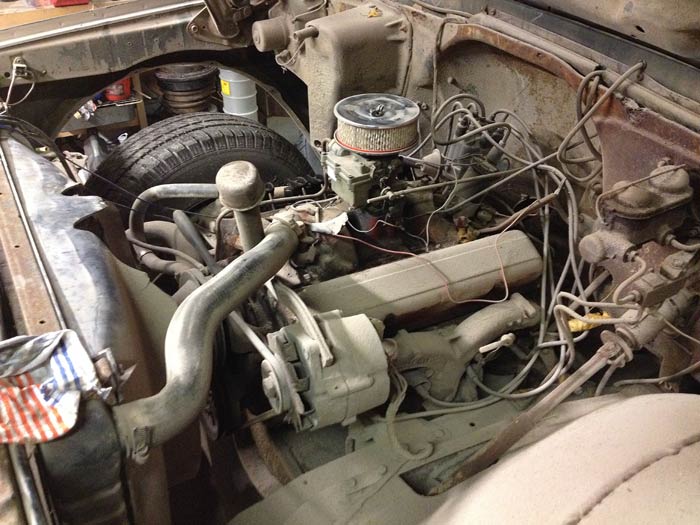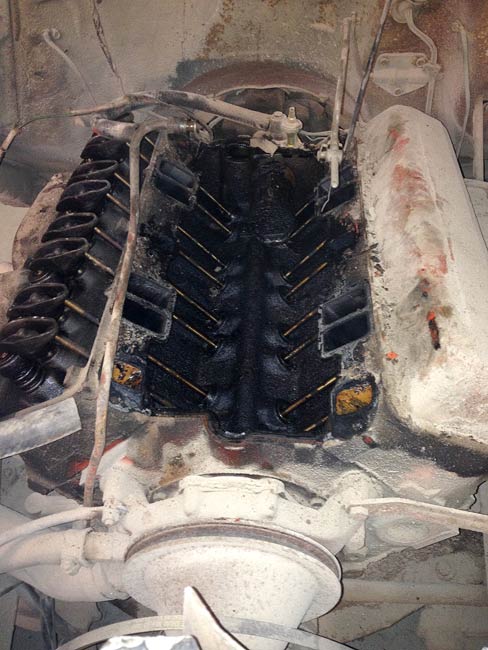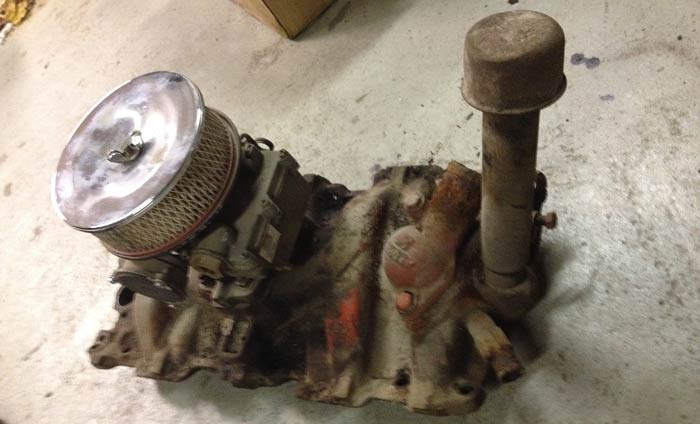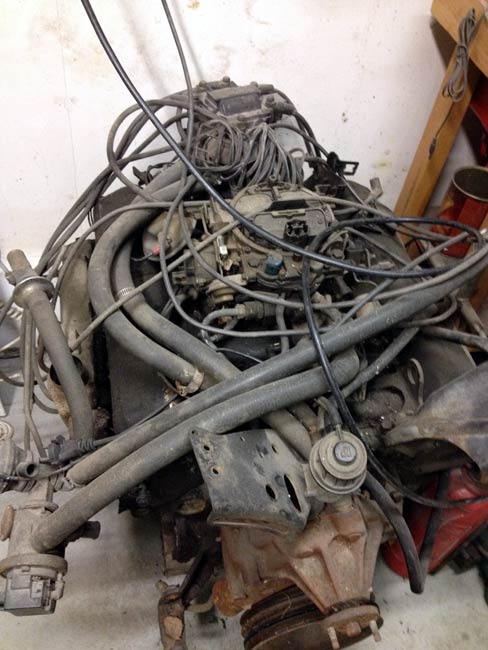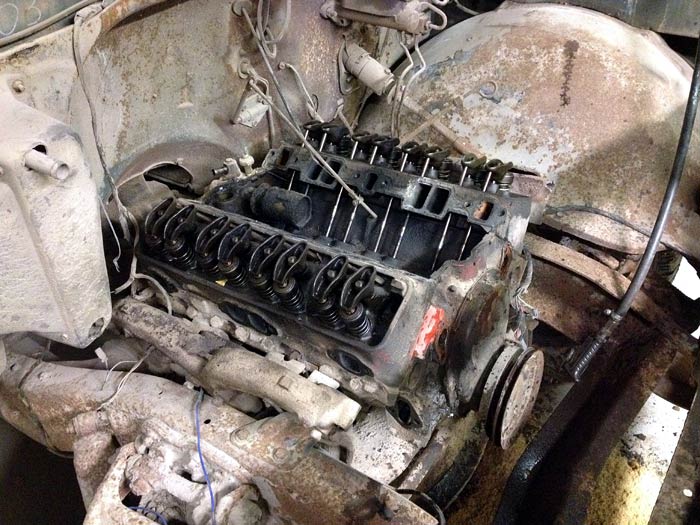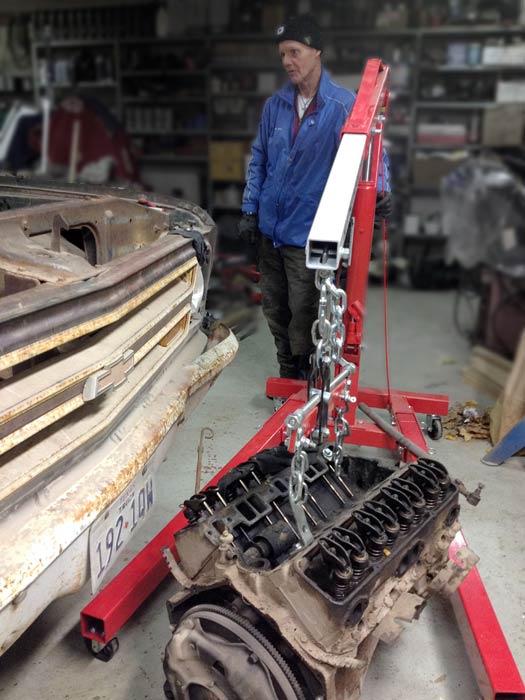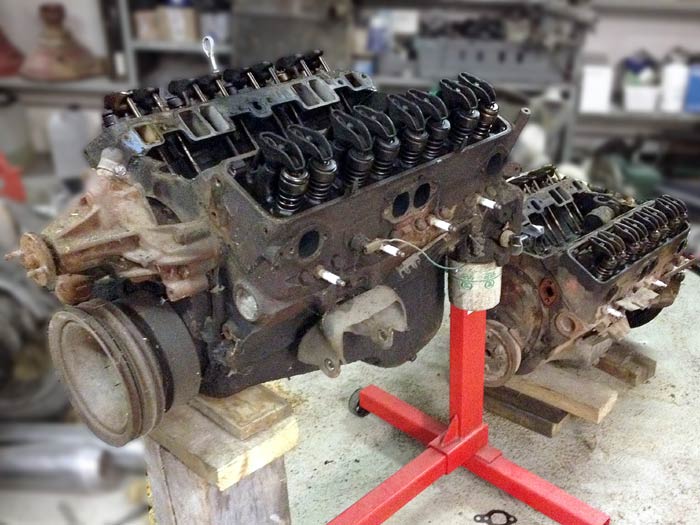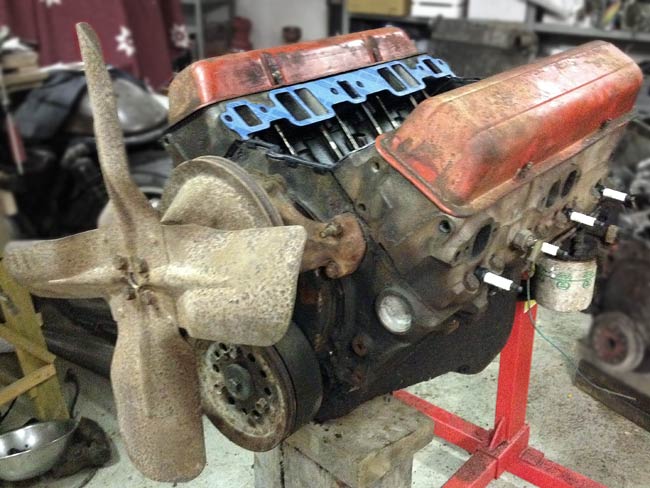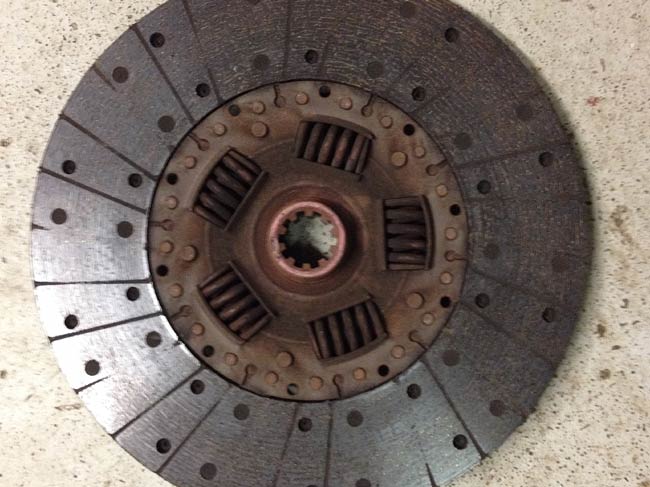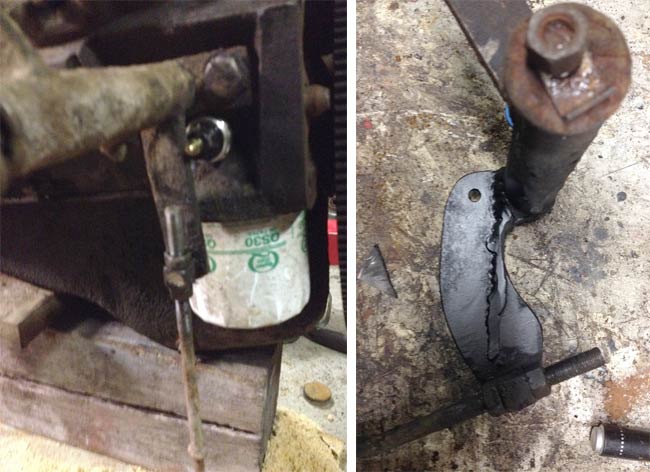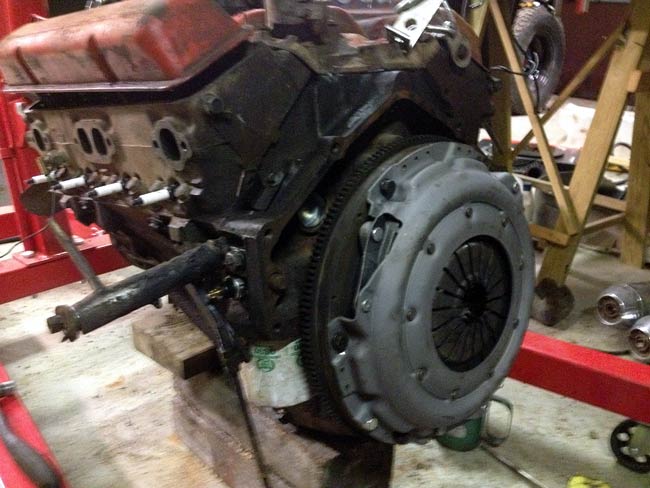
First page
Page 2
Page 3
Page 4
Page 5
Page 6
Back to Karkmotuning main page
|
|
The truck inside, and autumn sun shining in through the garage windows, the 283 looks pretty dusty from the frame being sand blasted. TIP: This kind of "before" pic can be very helpful later, when you're assembling the alternator mounts and such.
|
|
The intake was removed to be able to take a look at the cam shaft, but on a chevrolet small block, there's no way to see the cam from the top side of the block. Turning the engine with the starter with both valve covers off, showed that only one cam lobe has gone missing.
|
|
|
|
The two barrel intake looks almost cute, it's so little. It's going to be used on the "new" engine. The carb is a Holley rebuilt Carter 2G, bought in 2010, and used for just a few days. The engine was yanked out of the car, and the new carb has been resting since. |
|
This is the engine that's going to be used instead of the 283. It's a 305 out of an eighties Chevy station wagon, which hasn't been run in a decade or two. All of that unsightly plumbing will be deleted before the engine is fitted to the truck.The two barrel intake, red valve covers, old style distributor and ram horn exhaust manifolds will make it look like it belongs. |
|
|
|
Radiator, fan, shroud, hoses and water pump removed, the engine looks manageable enough. Only starter, transmission bolts and engine mounts to loosen... Soon time to get out the hoist. |
|
The exhaust manifold removed, and the engine unbolted from both the engine mounts and the transmission, it was time to yank it. A few pumps to get it off the mounts, and some wiggling later we could start lifing it. The front of the truck is pretty high, we were close to the hoist's limit.
|
|
|
|
The truck engine was put aside, and work commenced on the "new" 305 that's going in its place. The work consisted of getting rid of the myriad hoses and plumbing on this smog-era engine. |
|
Oil was pumped around the lubrication system using a home made tool and an electric drill. Then, after removing all sparkplugs, a compression test was done. Luckily the engine happened to have its starter motor in working order, so it was easily done.
Here the old short water pump is bolted to the new engine, along with the pulleys and fan from the old engine. Brand new sparkplugs that happened to be lying around in the shops were used. A gasket kit was acquired for this project. |
|

|
The freeze plugs might have been forgotten, had it not been for two screw in ones on the left hand side of the engine. When they came out, there was a bit more stuff than expected to remove, as some previous "mechanic" had just left the old plugs inside the block. |
There was a nasty amount of grime and rust inside the water jacket, so the engine, stand and all, was hauled outside, and flushed out nicely with the garden hose. It was five degrees C below freezing (23F), luckily the hose had been in warm storage. |
A freeze plug kit was purchased, and is next on the to do-list. By the way, the engine is meant to look grimy and untouched, even if it's serviced and in good working order. Hence no painting and polishing. |
|
|
The clutch assembly and fly wheel came off the 283 with a bit of persuasion. Regrettably the plate looks pretty much worn out, even if the cluch felt ok when the truck was last driven a couple years ago. |
|
Everything has worked out nicely so far, as the 305 is very similar to the 283 that was hoisted out of the truck. |
|
|
|
To the left the oile pressure sender can be seen. with the problematic clutch mechanism. A new cluch assembly bolted and torqued and thread locked to the flywheel. The engine is soon ready to go into the truck, but some work has to be done in the engine compartment as long as there's plenty of room to work there. The heater core is broken, the brake lines need replacing, and so on. The casting numbers, and stamped in suffixes were decoded today, the engine facts are as follows: Code H LG4, 150 hp, 305 cubic inch displacement engine, assembled in St.Catherines, Ontario, Canada in May 1:st 1984. Out of a Caprice. |
